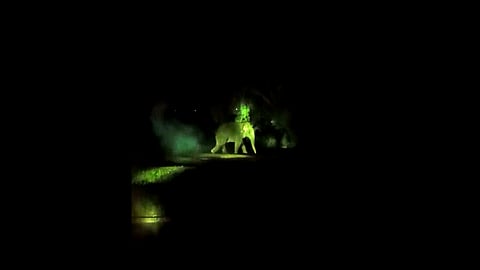Many farmers in Hambantota work in the fields during the day and patrol at night to protect their crops from elephants who come out in search of food and water. Photo: Roshan Gunasekare
Politics
On night patrol in Sri Lanka’s human-elephant conflict zone
Hambantota in Sri Lanka has been on the frontline for human-elephant conflict for years. 2022 was the worst year yet, with a death toll of 433 elephants and 145 people
Sri Lanka has the highest elephant density in Asia with an estimated 6000 elephants. Over the years, habitat loss, forest fragmentation, deforestation and urbanisation have intensified the human-elephant conflict in the region.

